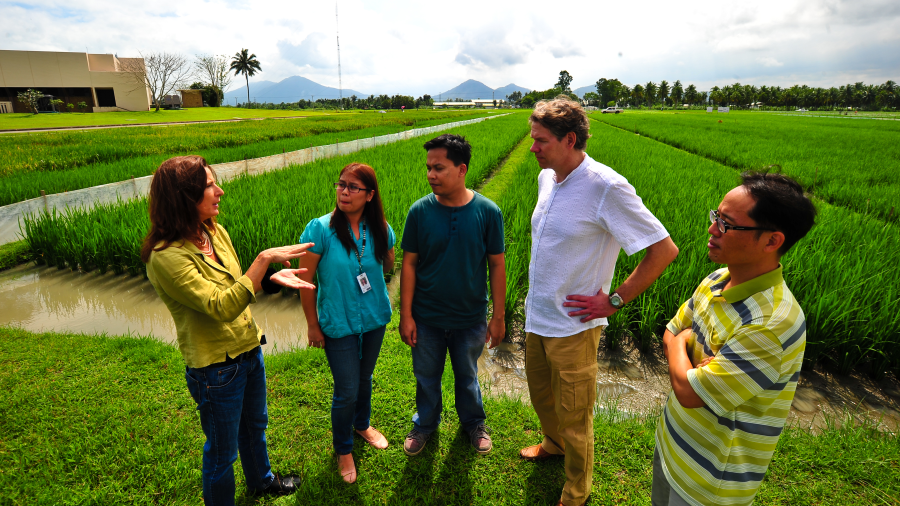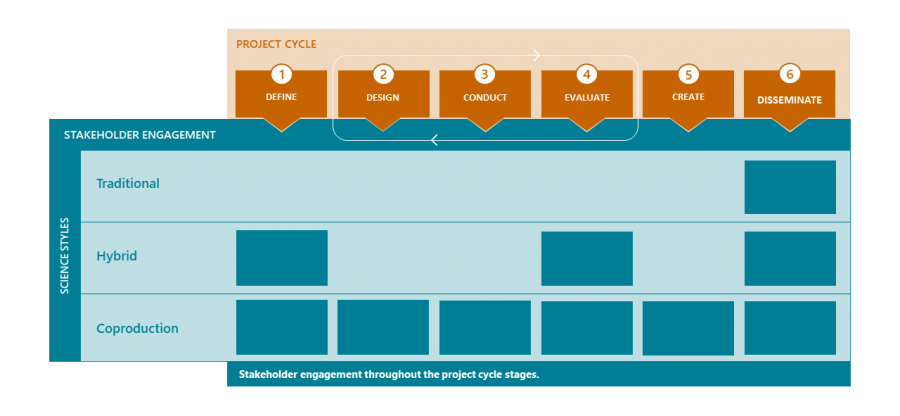
A downloadable version of this explainer is available here:
Overview
This explainer provides an overview of solutions-oriented research, including:
- Why it is not the same as “applied research” or “advocacy”
- Why it is broad and creative, requiring interdisciplinary approaches
- Examples of actionable research
- A visual to depict stakeholder engagement.
The defining characteristic of actionable research is that it is solution-oriented. It goes beyond understanding an environmental problem, or the bounds of a narrow academic debate, and launches us into the challenging realm of what can be done. This may require a change in mindset for many researchers—an expansion of thinking into the messier (and often more exciting) issues associated with social behaviors and desires, institutional decision making, individual behavior change, and public discourse. Actionable research is for those who want their work to make a difference in the larger world.
Actionable Research is Not One Thing
Actionable research is not synonymous with “applied research.” While applied research is actionable (it is applied, after all) it can also be narrow and not particularly creative. Actionable research is the opposite: broad, complex, and deeply creative. For one thing, solutions-oriented work usually requires expertise from fields outside our own (Kobilinsky 2021). It is rare for a single discipline—or two or three—to have the answer to a real-world problem. It is also rare for a solution to not require thinking about complex interactions across social and environmental systems. And it usually requires that we listen and respond to voices outside the world of science (Bamzai-Dodson et al. 2021).
For natural scientists, actionable research asks that they appreciate the role of human behavior, institutional and cultural factors, and social values connected to ecological outcomes. Social scientists tend to already focus on such things but may nevertheless need to expand their cross-disciplinary collaborations (within the social sciences); embrace analysis of broader social systems than they are used to; and directly engage with policy practitioners and decision makers. Moreover, social scientists must learn to collaborate with natural scientists around the dynamics and complexity of natural systems that affect social systems and outcomes.
Actionable science is also not synonymous with advocacy. Advocacy science typically pushes a particular solution (“this is the right thing to do, and therefore you should do it”). Actionable science, because it explores complex systems, tends to identify a variety of solutions, each with their own pros and cons, where the eventual solution is informed by, rather than pinpointed by the research.
Finally, “basic” research is often central to actionable research. For example, a project focused on one specific part of a social or ecological system can be foundational to the identification of solutions (Palmer 2012). The key to such basic research is that it anticipates and adapts to subsequent use by partners and disciplines who will embed it in broader, solutions-oriented inquiry.
Examples of Actionable Research Questions
- Based on our knowledge of non-point pollution sources and their effects, what are the pros and cons of government agency options for improving water quality?
- What information on ecological status and trends, landscape connectivity, and conservation costs should inform Critical Habitat designations under the Endangered Species Act?
- How do households respond to information campaigns informing them of their environmental footprints (e.g., related to energy use, recycling, food choices)?
- Can nature-based (green) infrastructure alternatives compete with built (gray) infrastructure investments in terms of their benefits and costs and given institutional biases toward conventional projects?
- What urban greenspace features do communities most desire and are they the features that will yield the greatest environmental improvement?
Key Takeaways
Actionable environmental research:
- Is solutions-oriented
- Requires analysis of both ecological and social systems
- Almost always involves contributions from multiple research disciplines
- Almost always involves input from stakeholders, decision makers, and other voices from outside the science community
- Is not synonymous with applied research
- Often requires “basic” research components
- Is not synonymous with advocacy science.

Actionable science involves contributions from diverse stakeholders
throughout the research process.
References
- Bamzai-Dodson, A., Cravens, A.E. et al. (2021). Engaging with Stakeholders to Produce Actionable Science: A Framework and Guidance. Weather, Climate, and Society, 13(4), 1027-1041. https:// www.jstor.org/stable/27205573/
- Kobilinsky, D. (2021, September 24). For Actionable Science, Scientists and Managers Should Work Together. The Wildlife Society. https://wildlife.org/for-actionable-science-scientists-and- managers-should-work-together/
- Palmer, M.A. (2012). Socioenvironmental Sustainability and Actionable Science. BioScience, 62(1), 5-6. https://doi.org/10.1525/bio.2012.62.1.2